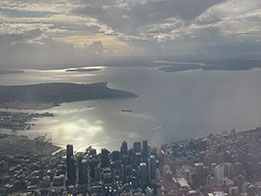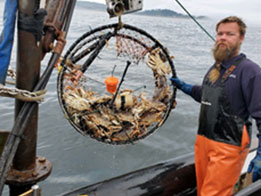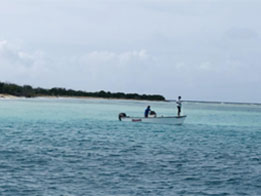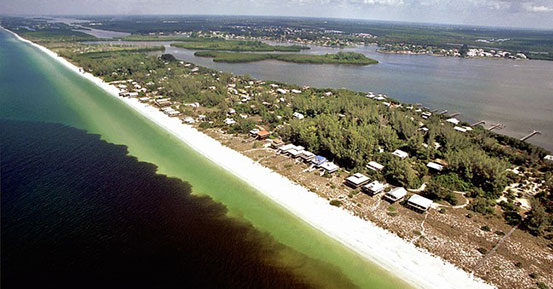Assessing Environmental and Economic Impacts
Harmful algal blooms (HABs) can produce toxins or cause other harmful effects that can damage U.S. coastal and Great Lakes ecosystems, disrupt seafood supply, impact economies, and threaten human health. The average annual economic impact of HABs in the U.S. is estimated at $10-100 million and costs from a single major HAB event can reach tens of millions of dollars. The social and cultural impacts from HABs are harder to quantify and severely challenge individuals and communities. Also, a lack of cost and benefit assessments of HAB mitigation and control approaches hamper efforts to lessen the hazards.
Societal Impacts of HAB Events
Several different marine and freshwater algal species cause significant societal impacts in coastal and Great Lakes states. HAB events cause such a diverse array of ecological and social disruptions—which vary by region—that it is difficult to make generalizations about their societal impacts at the regional or national level. Attempts to measure HAB impacts often vary widely in methodology and level of detail. These challenges hinder our understanding of the scale of HAB socioeconomic effects. Due to the complexity of these blooms and their impacts, governments and industry need to evaluate cost effective HAB response strategies. NCCOS supports competitive research projects that assess societal impacts of HAB events and the costs and benefits of HAB mitigation strategies. Our scientists are also advancing a national social and economic research initiative needed for comprehensive evaluations of the societal effects of HABs in the U.S.
Enabling Shellfish Toxin Testing by Alaskan Tribal Laboratories
HAB toxins accumulate in shellfish and must be monitored in harvests to prevent human illness. In Alaska, access to HAB toxin testing for commercially harvested products is limited to the State of Alaska public health authorities. The State of Alaska serves as the ultimate toxin testing authority, however the lack of knowledge about the toxins present in recreational and subsistence harvests does not deter regular consumption in high risk areas. This consumption may result in human illness and death. The development of a network of community operated testing labs has shown to limit the risk posed by HAB toxins in non-commercial harvests. The specific tool employed is the NCCOS developed and validated receptor binding assay for paralytic shellfish toxins. This method is approved for use by the Interstate Shellfish Sanitation Commission for bivalve testing and has been adopted by these community-based testing labs which provides community driven knowledge of the risk posed during some recreational and subsistence harvests. NCCOS scientists continue to expand the deployment of this technology by partnering with additional community-led laboratories throughout Alaska. This will further inform these non-commercial harvests on the risks posed by HAB toxins in these areas.
 Official websites use .gov
A .gov website belongs to an official government organization in the United States.
Official websites use .gov
A .gov website belongs to an official government organization in the United States. Secure .gov websites use HTTPS
A lock or https:// means you’ve safely connected to the .gov website. Share sensitive information only on official, secure websites.
Secure .gov websites use HTTPS
A lock or https:// means you’ve safely connected to the .gov website. Share sensitive information only on official, secure websites.




